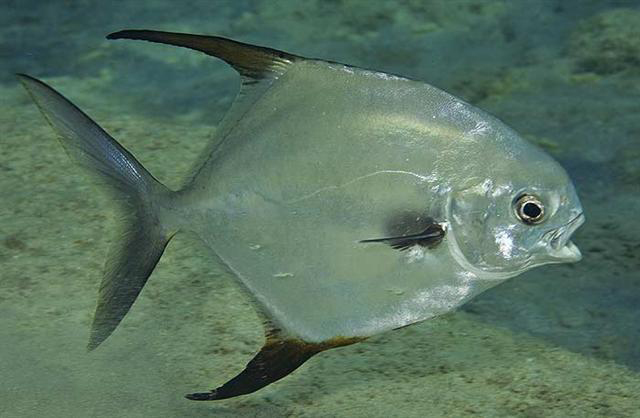| Carangidae (Jacks and pompanos), subfamily: Trachinotinae |
| 122 cm FL (male/unsexed); max.weight: 36 kg; max. reported age: 23 years |
|
reef-associated; brackish; marine; depth range 0 - 36 m |
| Western Atlantic: Massachusetts, USA to southeastern Brazil, including Bahamas and many of the West Indies (Ref. 7251). Reports from Africa are based on misidentifications, mostly referring to T. teraia (Ref. 81654). |
|
Dorsal spines (total): 6-7; Dorsal soft rays (total): 18-21; Anal spines: 2-3; Anal soft rays: 16-18. Dorsal and anal fins have very long, dark anterior lobes (Ref. 26938). No scutes; a broad patch of orange-yellow on abdomen in front of anal fin; pectoral fins blackish (Ref. 13442). |
| Adults frequently in channels or holes, over sandy flats, around reefs, and at times over mud bottoms; usually solitary or in small schools; smaller fish tolerate brackish water. Spawn offshore (Ref. 26938). During the summer, juveniles are found in large schools especially in the surf zone along sandy beaches. Adults feed on mollusks, crabs, shrimps, and small fishes; juveniles on benthic invertebrates. Excellent food fish (Ref. 9626). Highly esteemed game fish caught on light tackle (Ref. 26938). |
|
Least Concern (LC); Date assessed: 21 August 2012 Ref. (130435)
|
| harmless |
Source and more info: www.fishbase.org. For personal, classroom, and other internal use only. Not for publication.
